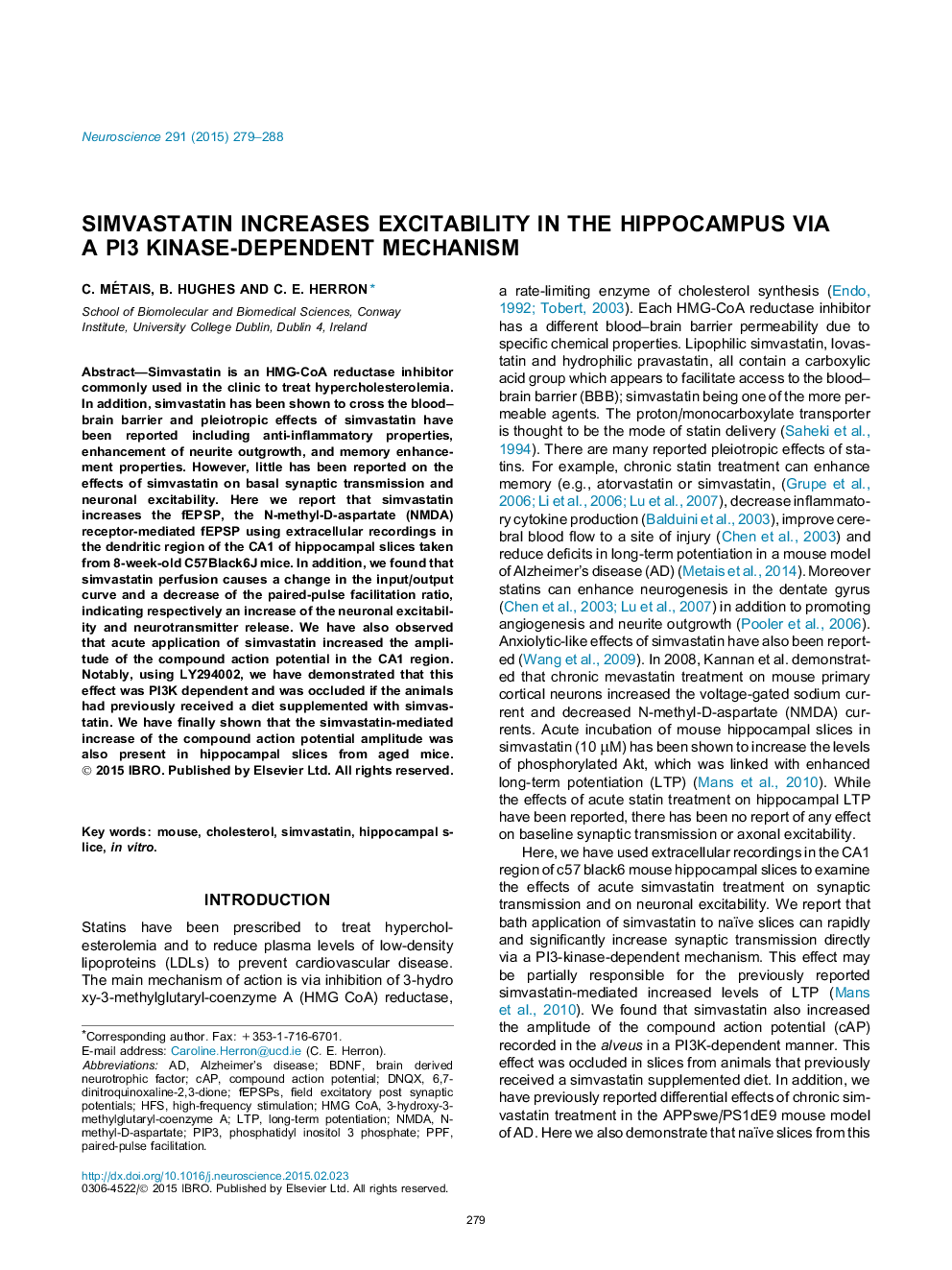| Article ID | Journal | Published Year | Pages | File Type |
|---|---|---|---|---|
| 6272778 | Neuroscience | 2015 | 10 Pages |
Abstract
Simvastatin is an HMG-CoA reductase inhibitor commonly used in the clinic to treat hypercholesterolemia. In addition, simvastatin has been shown to cross the blood-brain barrier and pleiotropic effects of simvastatin have been reported including anti-inflammatory properties, enhancement of neurite outgrowth, and memory enhancement properties. However, little has been reported on the effects of simvastatin on basal synaptic transmission and neuronal excitability. Here we report that simvastatin increases the fEPSP, the N-methyl-D-aspartate (NMDA) receptor-mediated fEPSP using extracellular recordings in the dendritic region of the CA1 of hippocampal slices taken from 8-week-old C57Black6J mice. In addition, we found that simvastatin perfusion causes a change in the input/output curve and a decrease of the paired-pulse facilitation ratio, indicating respectively an increase of the neuronal excitability and neurotransmitter release. We have also observed that acute application of simvastatin increased the amplitude of the compound action potential in the CA1 region. Notably, using LY294002, we have demonstrated that this effect was PI3K dependent and was occluded if the animals had previously received a diet supplemented with simvastatin. We have finally shown that the simvastatin-mediated increase of the compound action potential amplitude was also present in hippocampal slices from aged mice.
Keywords
NMDAPIP3HMG CoADNQXHFSN-methyl-d-aspartatePPF3-hydroxy-3-methylglutaryl-coenzyme A6,7-dinitroquinoxaline-2,3-dioneBDNFfEPSPsHippocampal sliceAlzheimer’s diseasehigh-frequency stimulationpaired-pulse facilitationlong-term potentiationLTPIn vitroSimvastatinbrain derived neurotrophic factorMouseCompound Action PotentialCaPcholesterol
Related Topics
Life Sciences
Neuroscience
Neuroscience (General)
Authors
C. Métais, B. Hughes, C.E. Herron,
